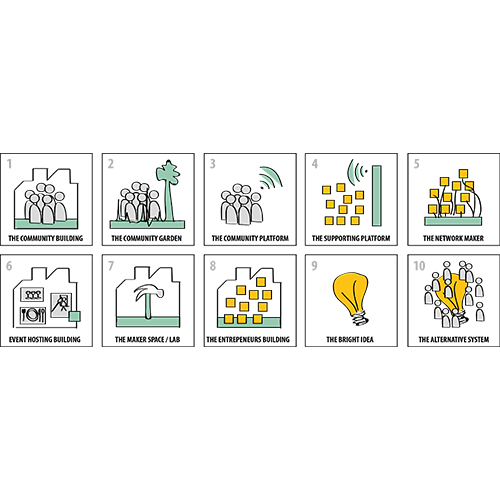Landscape of participatory city makers
A distinct understanding through different lenses
DOI:
https://doi.org/10.7577/formakademisk.2706Abstract
Today, citizens, professionals, civil servants, social enterprises, and others form different types of coalitions to overcome the challenges facing our modern cities. In this paper, the particularities of these types of groups are characterised and categorised into ten different types of city makers. Generally, these types of city makers bring value to cities, but we conclude that this value could be enriched through more participatory approaches that stimulate crossovers and accelerate the transition towards sustainable futures. Therefore, we characterise the different identified types as potential ‘participatory’ city makers. However, these participatory approaches and the networks between them still need to be developed, while improving conditions and dynamics that can enable and enhance innovation in urban environments. Design and systems thinking could contribute valuable methods and perspectives to the development of these participatory and systemic approaches. Finally, the categorisation presented in this paper must enable a better understanding of the transformative capacity of these different types of city makers, necessary for flourishing and sustainable communities.

Downloads
Published
How to Cite
Issue
Section
License
Authors who publish with this journal agree to the following terms:
- Authors retain copyright and grant the journal right of first publication with the work simultaneously licensed under a Creative Commons Attribution 4.0 License that allows others to share the work with an acknowledgement of the work's authorship and initial publication in this journal.
- Authors are able to enter into separate, additional contractual arrangements for the non-exclusive distribution of the journal's published version of the work (e.g., post it to an institutional repository or publish it in a book), with an acknowledgement of its initial publication in this journal.
- Authors are permitted and encouraged to post their work online (e.g., in institutional repositories or on their website) prior to and during the submission process, as it can lead to productive exchanges, as well as earlier and greater citation of published work (See The Effect of Open Access).
- The author(s) must manage their economic reproduction rights to any third party.
- The journal makes no financial or other compensation for submissions, unless a separate agreement regarding this matter has been made with the author(s).
- The journal is obliged to archive the manuscript (including metadata) in its originally published digital form for at least a suitable amount of time in which the manuscript can be accessed via a long-term archive for digital material, such as in the Norwegian universities’ institutional archives within the framework of the NORA partnership.
The material will be published OpenAccess with a Creative Commons 4.0 License which allows anyone to read, share and adapt the content, even commercially under the licence terms:
This work needs to be appropriately attributed/credited, a link must be provided to the CC-BY 4.0 licence, and changes made need to be indicated in a reasonable manner, but not in any way that suggests that the licensor endorses you or your use.



